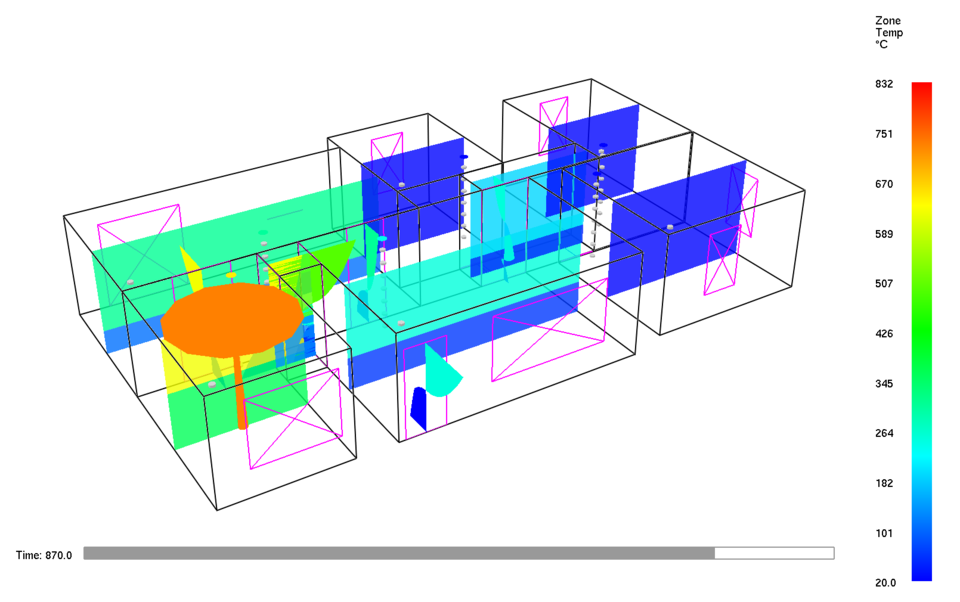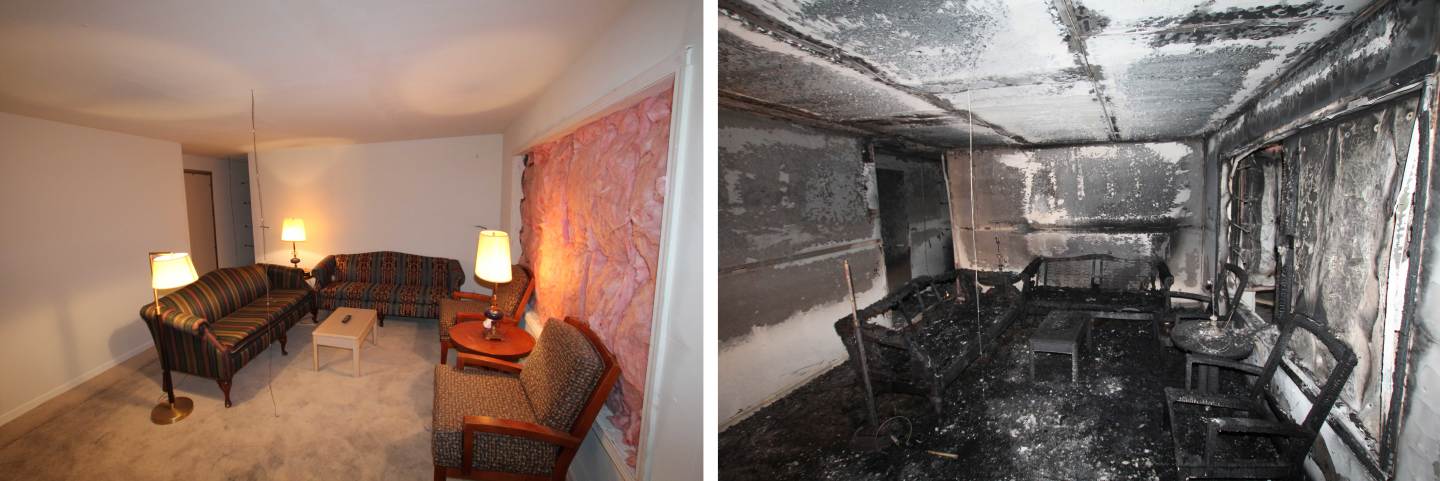Flashover is a very dangerous phenomenon, in which all of the exposed combustible materials in an enclosed area near-simultaneously ignite. Thanks to a new AI-based system, however, firefighters may soon receive warnings when flashover is imminent.
Typically, flashovers occur when a structure fire causes the temperature in an enclosed space to reach at least 593 ºC (1,100 ºF) – this is the approximate autoignition temperature of many commonly used organic materials. As a result, they will emit flammable gases and ignite at more or less the same time, even if they haven’t been directly exposed to flames.
Needless to say, firefighters do not want to be in a building when a flashover occurs. Given the chaos and limited visibility inside burning structures, though, it can be difficult for them to spot visible warning signs such as flames rolling across the ceiling. And while many buildings are equipped with heat sensors, the devices usually stop working at a temperature of about 150 ºC (302 ºF), long before flashovers happen.
That’s where P-Flash – the Prediction Model for Flashover – is intended to come in.
Designed by scientists at the US-based National Institute of Standards and Technology (NIST), it utilizes machine learning algorithms that were trained on 4,033 varying computer simulations of a burning three-bedroom, one-story, ranch-style home. In most US states, this is the most common type of house.

NIST
Although the virtual heat sensors in that home cut out at 150 ºC, the algorithms learned to predict approximately when the temperature inside the home would reach 593 ºC, based on variables such as the rate at which the temperature was rising. When P-Flash was subsequently tested on additional burning-house simulations, it was 86 percent accurate at predicting flashovers one minute before they occurred. Additionally, when it was less accurate, it usually predicted them early … which is obviously better than predicting them late.
The system was subsequently tested against real-world data from 13 actual house fires, which were purposely lit in a ranch-style test home under varying conditions. Although P-Flash remained accurate in cases where the fire originated in an open area such as the living room, it was much less so when the fire started in closed rooms. This could be due to the fact that when fires are initially contained within such spaces, temperatures rise unpredictably when those fires subsequently break out into the rest of the building’s interior.

UL Firefighter Safety Research Institute
Despite this present shortcoming, the scientists believe that once developed further, P-Flash could still become a valuable tool. By combining a home’s real-time heat sensor data with information on variables such as its building materials, the system could transmit warnings to firefighters who might otherwise be unaware that a flashover was about to occur.
The research is described in a paper that was recently published in Proceedings of the AAAI Conference on Artificial Intelligence.
Source: NIST
Source of Article